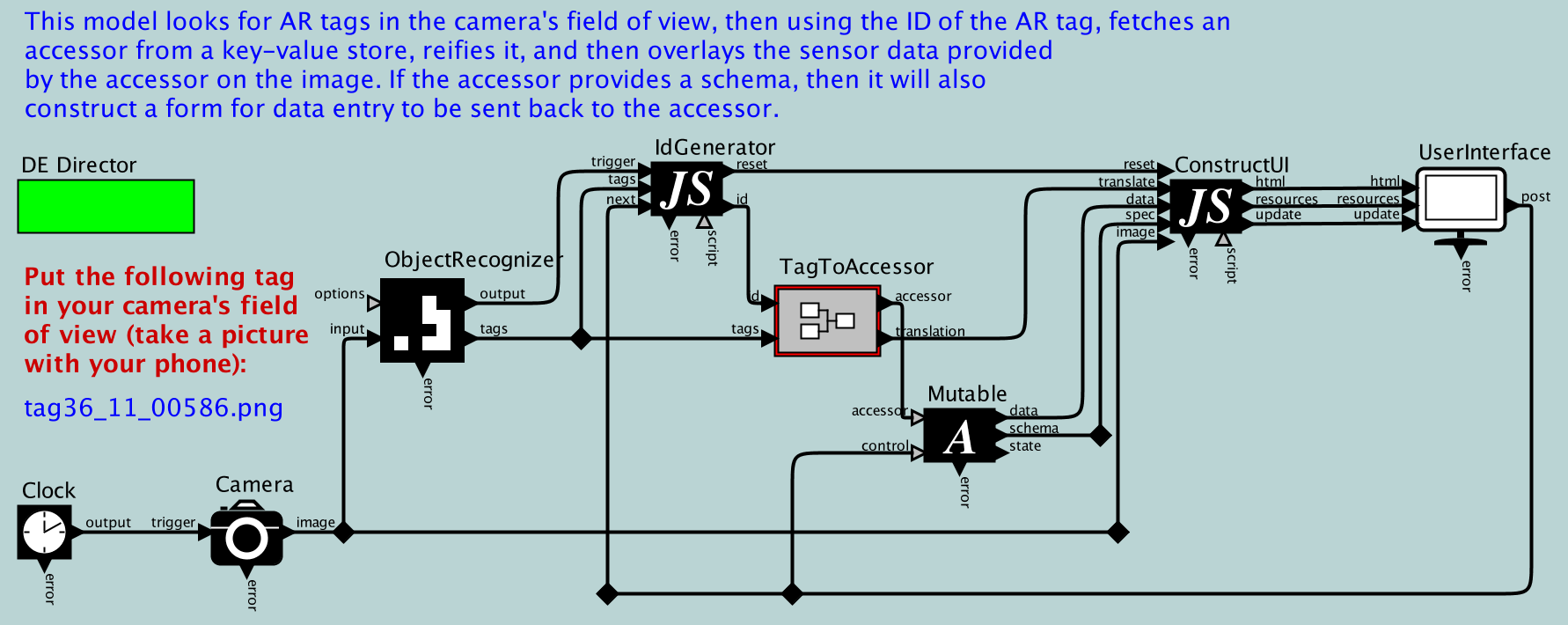
|
Main /
Tutor2017Tutorial As part of RTSS'17 in Paris December 5-8, Edward A. Lee and Christopher Brooks presented a tutorial about CapeCode on Tuesday, December 5 at Tutor2017, located at The ECE school, 10 rue Michel Sextius, 75015 Paris. CapeCode is a design tool for Internet of Things (IoT) applications that combines graphical block diagrams with simple scripts written in JavaScript. Attendees will learn to wire together existing blocks from a library and to create their own scripted blocks to orchestrate the use of IoT devices. The guiding exercise will be an augmented reality application where a laptop camera can visually recognize IoT devices in the room (or mockups of said, which we will provide) and interact with those devices over a network. Prior experience with JavaScript helpful but not essential. The CapeCode portion of the Program was:
Workshop documentation:
To follow the tutorial, please install CapeCode using Subversion ( $PTII/bin/capecode $PTII/ptolemy/demo/CapeCode/CapeCode.xml If you are unable to install Ptolemy II using Subversion, then please try one of the the installers on the Ptolemy II/CapeCode page. If you have questions or problems with the installers, please email Christopher Brooks. |